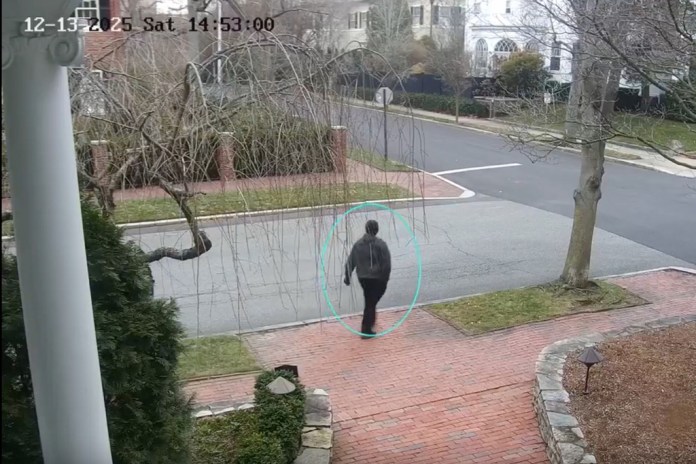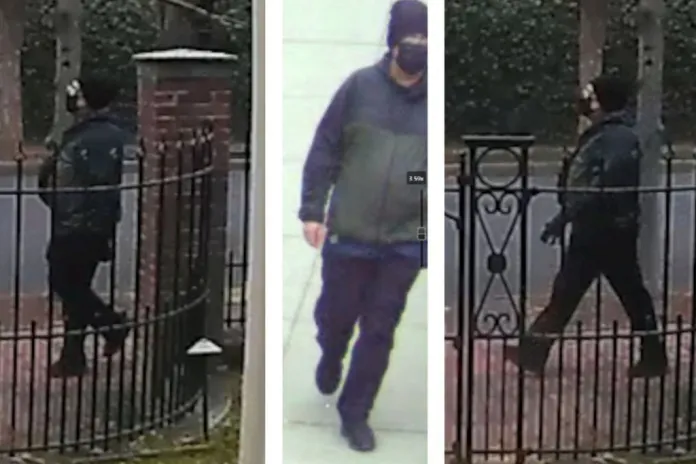Capitol Police, FBI Failed to Share ‘Credible Threats’ Before Jan. 6 Breach: Watchdog
Identified FBI agents and U.S. Capitol Police Officers “credible threats” In a new report, a watchdog states that although they had certified the electoral vote ahead of the Jan. 6, 20,21, date, they did not properly disseminate intelligence.
The FBI obtained information from human informants, social media, and other agencies and tracked suspected domestic terrorists traveling to Washington, according to the U.S. Government Accountability Office (GAO) report (pdf).
Capitol Police officials reviewed information from arrests, investigations, and open sources. They distributed a document three day before Jan. 6, that contained information about a subject in an investigation. It said that a subject had stated that militia members intended to attend a Jan.6 demonstration while armed. This would violate Washington law.
Both agencies evaluated threats for credibility and reported that some threats were deemed credible.
Both failed to follow the guidelines for sharing or processing information, according to the watchdog.
FBI agents in San Antonio, Texas received tips from Parler social media company but did not create reports based upon the tips.
“FBI officials noted that the FBI San Antonio Field Office did not develop any related reports on January 6 events as required by policy, such as Guardians, situational information reports, or intelligence information reports but did not indicate why not,” GAO stated.
These reports are sent to law enforcement partners at the state, tribal, and local levels.
Rep. Ralph Norman (R.S.C. “Just the News, No Noise” The FBI “had a blueprint for what was going to happen, and they didn’t think about it and look at the consequences.”
According to the GAO report, some FBI reports were created and shared with partners.
‘Relevant Threat Information’ Omitted
Capitol Police officials were left out, however. “relevant threat information” According to GAO, it was received from other agencies in documents created for Jan. 6.
“Capitol Police identified potential violence that could occur on January 6 in Washington, D.C. in advance of planned events. However, it did not consistently incorporate complete information into assessments of threats in its threat products, such as information obtained from other agencies regarding an individual traveling to Washington, D.C. to engage in violence at January 6 events,” According to the report.
One example of the information that was left out was a Washington Homeland Security report on suspicious activity, which indicated that an individual planned to travel into Washington to participate in violence during January 6 protests.
Capitol Police officials did not update a threat product with important information. It included information suggesting violence might occur during demonstrations. “resulting in some officers, agents and intelligence staff not having complete information,” The report stated.
GAO also examined the National Park Service (and the Secret Service) and received information from them. However, the agencies either failed to assess credibility threats or didn’t identify any threats as credible.
The Department of Homeland Security Office of Intelligence & Analysis (DHS I&A) did not assess any reports or identify any credible threats before the department’s team charged with collecting information from open sources “did not share reports on January 6 open source threats with other DHS I&A divisions until after the Capitol attack occurred,” The watchdog agrees.
DHS I&A failed to share information also with the Capitol Police “in a timely manner,” GAO stated.
GAO made 10 suggestions, including the recommendation to FBI Director Christopher Wray, a Trump appointee to assess why personnel didn’t adhere to policy in processing Jan. 6 information and to implement a plan to correct what went wrong.
FBI Takes Notice
Many agencies, including FBI, agreed to the recommendations.
“We appreciate the GAO’s extensive fact gathering and thorough analysis in the report,” This is an additional feature “we will incorporate GAO’s conclusion that, despite collecting and sharing significant pieces of threat reporting, the FBI did not process all relevant information related to potential violence on January 6,” Larissa Knapp was an FBI official who responded to GAO.
“Our goal is always to disrupt and stay ahead of the threat, and we are constantly trying to learn and evaluate what we could have done better or differently, this is especially true of the attack on the Capitol,” Knapp said it as well.
Knapp’s original letter was the FBI’s only contact. The DHS and Capitol Police did not respond to our requests for comment.
Thomas Manger, the Chief of U.S. Capitol Police told GAO it was taking steps to implement recommendations by the watchdog that the Capitol Police Board establish policies for sharing information regarding possible threats throughout the agency.
Manger stated that the department is currently drafting policies. “will provide guidance for sharing threat-related information agency-wide.”
GAO a>=”https://www.theepochtimes.com/department-of-homeland-security-failed-to-adequately-prepare-for-jan-6-gao_3943364.html”>previously Concluded DHS should have made Jan. 6th demonstrations special. This would have resulted in heightened security.
Another previous report It was found that agencies knew of open-source information, which is publicly available information, about potential violence plans for Jan. 6.
From Capitol Police, FBI Failed to Share ‘Credible Threats’ Before Jan. 6 Breach: Watchdog
" Conservative News Daily does not always share or support the views and opinions expressed here; they are just those of the writer."




